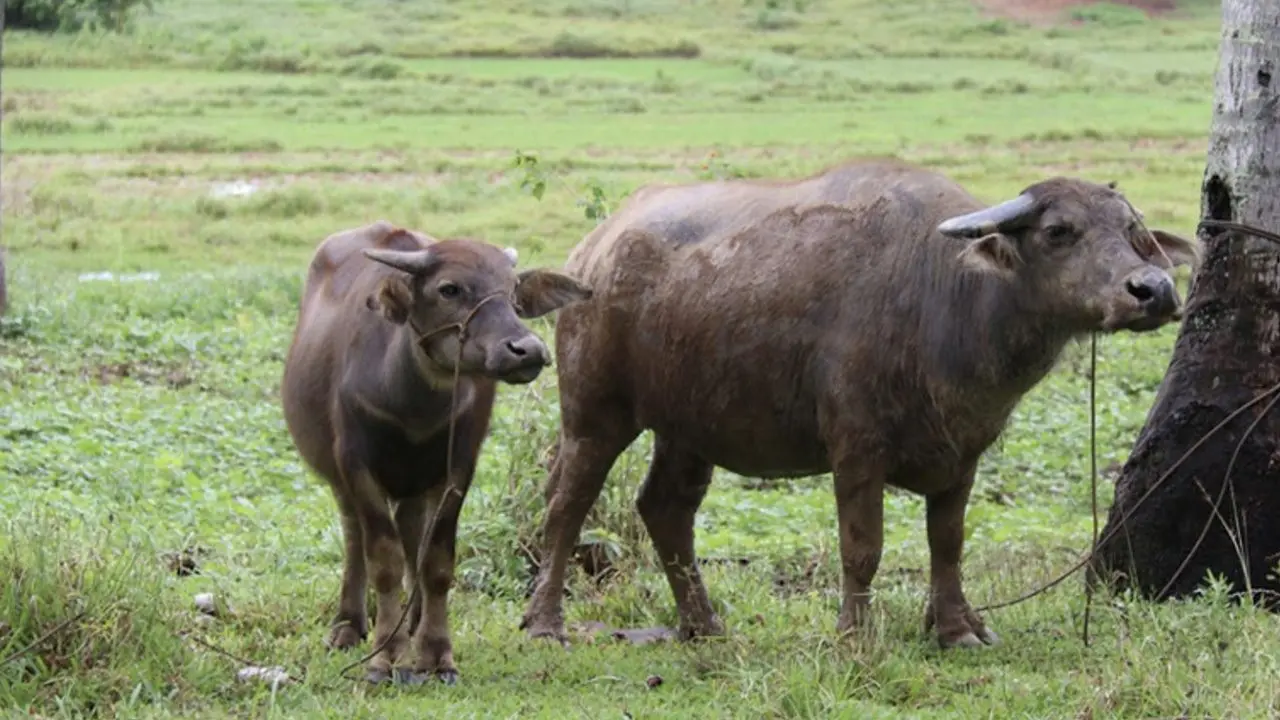
MANILA, Philippines – A study by scientists from the Institute of Biology (IB) of the College of Science of the University of the Philippines (UP) and the Philippine Carabao Center (PCC) proposed to revive an 1860 species classification that recognizes the swamp buffalo (commonly known as carabao) as a distinct species from the riverine buffalo.
The Philippines currently recognizes the riverine buffalo (Bubalus bubalis bubalis) and swamp buffalo (Bubalus bubalis carabanensis) as subspecies classified under the domesticated buffalo (Bubalus bubalis) species. The domesticated buffalo is under the Bubalus classification with four other wild buffalo species.
Probing into the genetic relationship among the Bubalus classification species, the study found that the swamp buffalo is distinct from the riverine buffalo. The study then proposed that the swamp buffalo be reassigned under the Bubalus classification, from being Bubalus bubalis carabanensis to Bubalus kerabau.
This revives the classification by the late Austrian zoologist Leopold Joseph Fitzinger, who assigned the swamp buffalo as Bubalus kerabau in 1860.
Identity ‘controversy’
A lack of studies on the matter and an existing “controversy” regarding the identities of the river and swamp buffalo species in the Philippines led the scientists to begin the study.
In 1971, Filipino scientist Leopoldo Sanchez Castillo made a proposition synonymous to Fitzinger’s to classify the swamp buffalo under the Bubalus, but with the scientific name Bubalus carabanensis. Based on article 23 of the International Code of Zoological Nomenclature (ICZN), Fitzinger’s classification takes precedence over Castillo’s since it was published first.
In 1998, Castillo then proposed the swamp buffalo be classified under the Bubalus bubalis species as Bubalus bubalis carabanensis, the same species classification as the riverine buffalo, which is currently recognized.
This makes Castillo’s new classification no longer synonymous with Fitzinger’s Bubalus kerabau; ICZN article 23 no longer applies.
Like the researchers from IB and PCC, scientists in Europe who studied Bubalus proposed in 2021 to distinguish the swamp buffalo from the riverine buffalo, supporting Fitzinger’s Bubalus kerabau classification.
Crossbreeding and conservation
“Confusions on the classifications of the two buffaloes have implications on the breeding program of these species,” said IB scientist Ian Kendrich Fontanilla as quoted in a press release.
Swamp buffaloes are known to assist farmers with tilling land and transporting tools, while riverine buffaloes are mainly sources of milk, according to the UP College of Science. Despite the genetic differences between the species, the Philippines has been crossing river and swamp buffaloes “on a large scale.”

These projects had hoped to develop animals with enhanced genetic potential to produce milk and meat. However, the results of the projects have not been favorable due to the species’ genetic characteristics.
The proposed reclassification of the swamp buffalo or carabao to Bubalus kerabau will have “implications for the monitoring of the [genetic diversity of the Bubalus] toward conservation and management,” the researchers said.
In the study, only swamp and riverine buffaloes were examined. According to the UP College of Science, the researchers plan to probe crossbred buffaloes in the future to either improve or strengthen the current classification of the domesticated buffaloes. – Rappler.com
